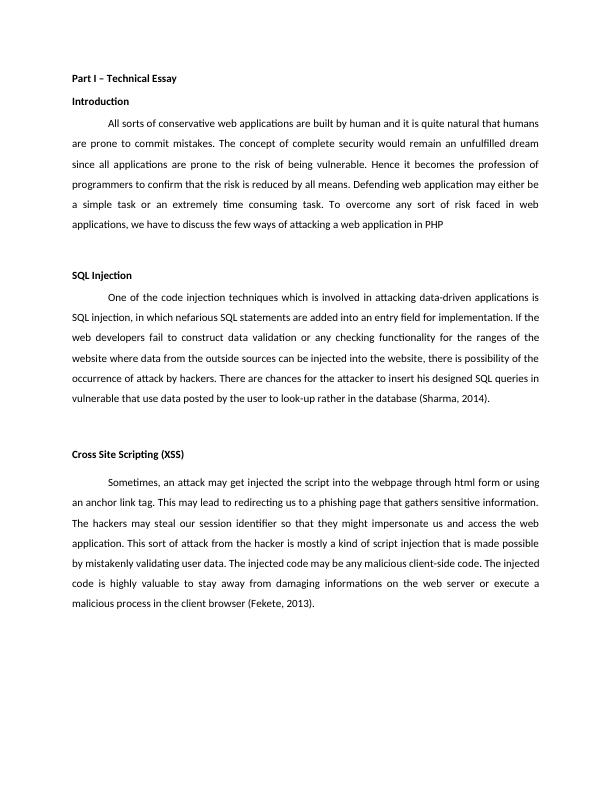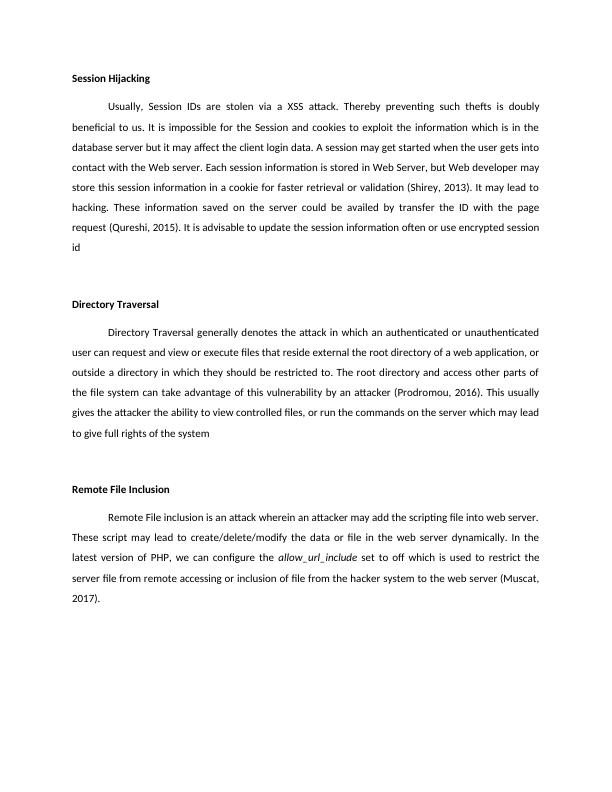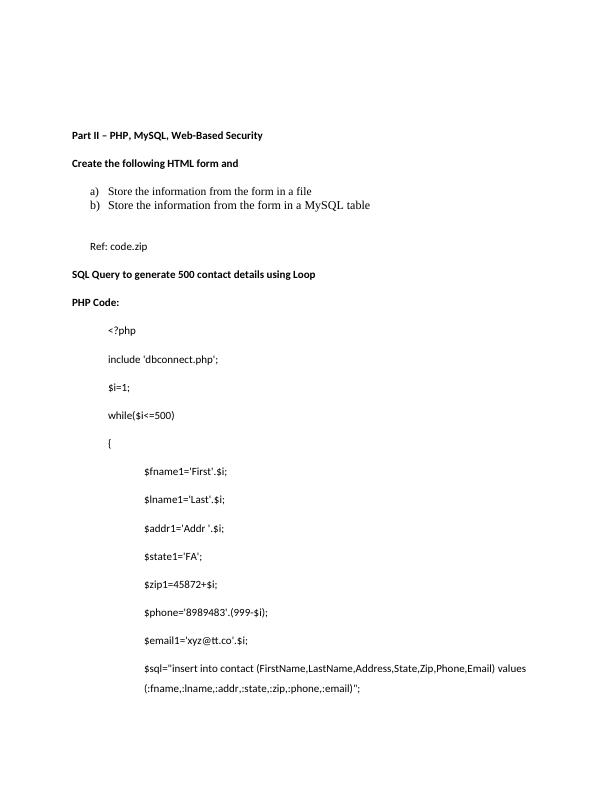Ways of Attacking a Web Application in PHP: SQL Injection, XSS, Session Hijacking, Directory Traversal, and Remote File Inclusion
Explain 5 security issues associated with PHP applications that are different than the ones presented in the course content by summarizing 5 articles found online or at the ASU Library.
9 Pages1493 Words176 Views
Added on 2023-06-14
About This Document
This technical essay discusses the different ways of attacking a web application in PHP, including SQL injection, XSS, session hijacking, directory traversal, and remote file inclusion. It also explains the security measures to secure web-based applications. The essay also includes a PHP code for generating 500 contact details using a loop and a MySQL table creation with a detailed description of the table.
Ways of Attacking a Web Application in PHP: SQL Injection, XSS, Session Hijacking, Directory Traversal, and Remote File Inclusion
Explain 5 security issues associated with PHP applications that are different than the ones presented in the course content by summarizing 5 articles found online or at the ASU Library.
Added on 2023-06-14
ShareRelated Documents
End of preview
Want to access all the pages? Upload your documents or become a member.
Contemporary World Application 2022
|10
|541
|10
Cross Site Scripting attacks take place when a specific untrusted
|4
|770
|349
Software Security Assignment
|5
|999
|61
Threat Detection Technique
|6
|1177
|99
System Security : Report
|13
|999
|347
Advanced Network Security: Wireshark Analysis, Web Application Attacks, Cryptography Concepts, Trojan Download Research
|12
|1957
|154



